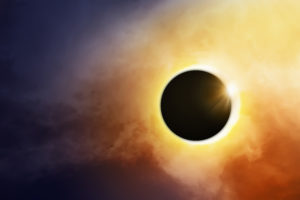July 3, 2017
Solar Eclipse Will Happen on August 21
Where will you be when the sun goes out? The Great Smoky Mountains National Park reports that the guided trip to Clingmans Dome for the August 21 solar eclipse already is sold out. The park can provide information on other viewing areas http://www.nps.gov/grsm/planyourvisit/2017-solar-eclipse.htm
Some Fun Facts About The Solar Eclipse:
- Prussian astronomer, Friedrich Bessel, developed the complex mathematical formula for predicting solar eclipses in 1824.
- The speed of the moon as it moves in front of the sun is approximately 1,398 miles per hour.
- Total eclipses cannot be seen from either the North Pole or the South Pole.
- The Citizen Cate (Continental-America-Telescope-Eclipse) Experiment has enlisted scientists from 60 sites across the country to film the eclipse. When edited together, the film will be the longest video of an eclipse ever recorded. It is expected to help investigators research the corona which normally is invisible.
- In Mark Twain’s 1889 book “A Connecticut Yankee in King Arthur’s Court” the protagonist saves himself from being burned at the stake by predicting a solar eclipse in the year 528.
- One of the most memorable eclipses in filmdom is the crucifixion scene in “Barabbas” which was filmed during an actual eclipse in February 1961.
- The Science Fiction Writers of America named Isaac Asimov’s “Nightfall” the best story written prior to 1965. The plot revolves around pending darkness in a world perpetually in sunlight.
- The sun is about 400,000 times brighter than the full moon. Be sure to invest in special filtered glasses to preserve your eyesight.
- Venus should be visible to the upper right of the eclipsed sun.
- The sun’s diameter is about 400 times larger than that of the moon. But because of the distance between the sun and the moon, both appear approximately the same size when viewed from Earth.
- Total solar eclipses are rare. One can be viewed from somewhere on Earth about every 18 months.
Happy viewing!





Gatlinburg Weather
Click for weather forecast